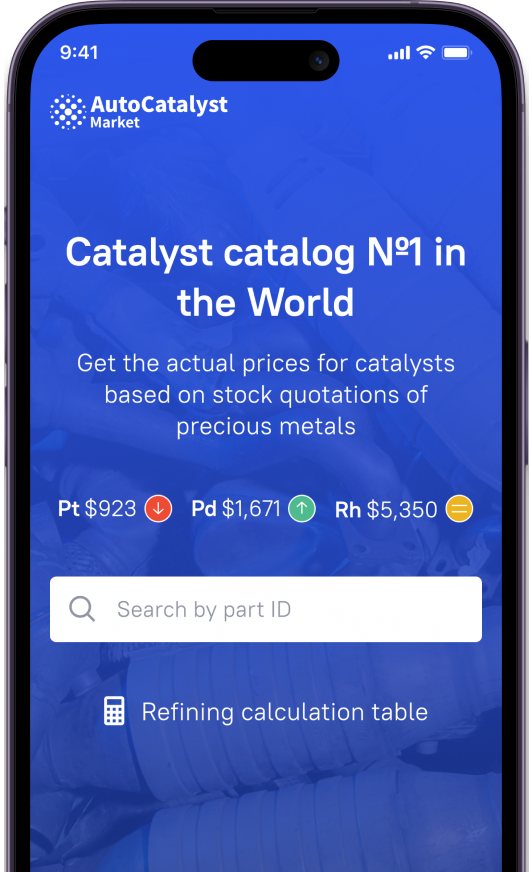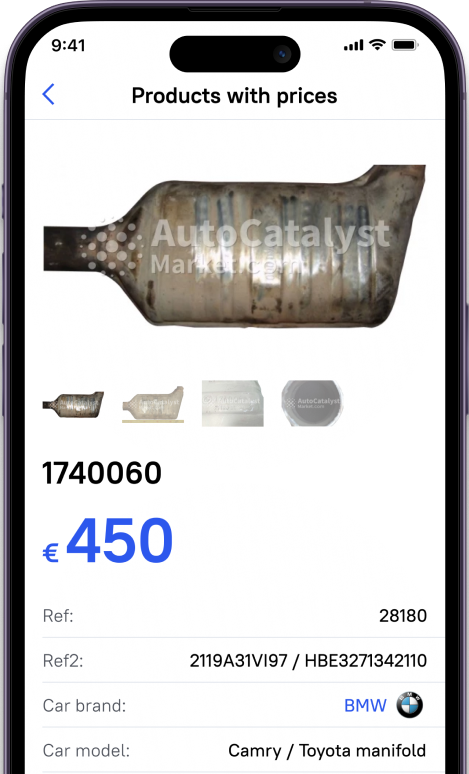- Myths about catalytic converter service life
- "Catalytic converter fails very quickly."
- "The catalyst reduced engine power"
- Why is catalyst so expensive?
- What is the connection between catalytic converter and lambda sensor?
- Is it possible to turn off the lambda sensor?
The fact that catalytic converter will soon fail, is primarily indicated by a decrease in engine power: accelerating dynamics deteriorate, maximum speed decreases, and over time the engine is difficult to start. Failure of catalyst at an early stage may not be noticed. It's just that the driver has to step on a gas pedal more intensively to compensate for the loss of power. At this stage, exhaust air sometimes acquires a sharp poisonous smell of hydrogen sulfide, which just indicates problems with the catalyst. Because it is the catalytic converter that contains chemical processes of decomposition of exhaust gas.
Myths about catalytic converter service life
Catalysts fail mainly for two reasons:
-
either when ceramic core is melted due to violations of operating rules or cells become clogged with soot;
-
when catalytic layer or ceramics itself is destroyed due to long-term operation.
There are common myths about the lifetime of catalytic converter. Here we will find out what is true and what is wrong.
-
"Catalytic converter fails very quickly."
This is not entirely true. Lifetime of catalysts with proper operation (high-quality petroleum products) is 60-150 thousand kilometers of the vehicle, after which it is recommended to sell old catalytic converter, which is quite natural. The catalyst filters exhaust gases, and filters, as you know, need to be changed.
However, its performance largely depends on proper operation of ignition and power systems, as well as on quality of fuel. Internal parts of catalytic converters may be made of ceramic or metal. Ceramic catalysts are cheaper and therefore more common. Ceramic catalyst is quite fragile and is afraid of mechanical stress.
From a stone lying on the road, internal ceramic honeycombs can be destroyed into small pieces. The same thing can happen if water gets on the hot catalyst. Also, ceramic catalytic converter can be destroyed by malfunctions of engine ignition system. This is due to the fact that during a failed start, unburned gas accumulates in the exhaust tract. When the car finally starts, an explosion occurs in a catalyst and ceramic cells do not resist, but crumble.
Metal catalyst is more reliable in this regard. But still, whatever the internal structure of catalysts, they all fail due to the following reasons:
-
Low-quality gasoline;
-
Oil or coolant entering combustion chamber and, accordingly, into the catalytic converter;
-
Long engine idling;
-
Re-enriched fuel mixture caused by malfunctions in power system.
Catalysts are capable of operating normally only with a motor equipped with electronic ignition and injection system with microprocessor control.
-
"The catalyst reduced engine power".
There are also doubts about this idea. A catalytic converter in no way prevents the passage of exhaust gases and practically does not reduce engine power. But a faulty (melted, destroyed) or soot-clogged catalyst really reduces exhaust gas permeability, as a result of which the car begins to lose power. Inside a faulty catalytic converter, temperature can increase so much that ceramics melts and completely blocks the path of exhaust gases. In some cars, when catalyst is destroyed, its particles can get into combustion chamber through EGR system. In such case internal combustion fails, getting scuffing on walls of cylinder block. Therefore, it is recommended that the old catalyst should be recycled after 100,000 km, regardless of its performance.
Why is catalyst so expensive?
Production of catalytic converters is a rather expensive and complex process. In addition, expensive platinum is used as a chemical catalyst, which is able to withstand sulfur compounds. For greater operational efficiency, palladium and rare-earth element rhodium is added to platinum catalyst bed.
To avoid problems with catalytic converter, the following operating rules must be observed:
-
Refuel the car only with high-quality gasoline;
-
Do not start the engine from the “pusher”, as unburned fuel entering the catalyst can lead to overheating and consequently failure;
-
Id the engine does not start after two or three attempts, it is necessary to pause so that the fuel accumulated on surface has time to evaporate;
Probability of failure of catalytic converter is increased due to the release of a portion of unburned fuel into the exhaust system during interruptions. Due to a failure of one of spark plugs or breakdown of a high-voltage wire, total catalytic converter damage can be caused.
What is the connection between catalytic converter and lambda sensor?
For normal operation of a catalyst, it is necessary to ensure a constant optimal ratio of air and fuel in working mixture entering the combustion chamber.
14.7 parts of air and 1 part of fuel is the composition that ensures maximum combustion of the fuel-air mixture. Lambda sensor is designed just to maintain this proportion. Depending on oxygen content in exhaust system, the sensor generates an appropriate voltage, and control unit adjusts the composition of mixture by changing amount of fuel supplied to cylinders.
Typically, the sensor is in front of catalytic converter and measures oxygen content in gases in front of it. That is, the presence or absence of a catalyst does not affect the signals that lambda sensor provides. They are affected only by the amount of oxygen. Another thing is when there are two oxygen sensors, one before, and the other after the catalyst. Based on signals from the second sensor, an additional adjustment of mixture composition takes place, and oxygen content after the passage of gases through catalytic converter changes. Its absence can adversely affect the formation of fuel-air mixture.
Is it possible to turn off the lambda sensor?
After selling old catalytic converter, buy a new one. Make sure of presence of a lambda sensor as a part that ensures high-quality operation of the catalyst.
In case of removal of catalytic converter, the control program changes and lambda sensor is simply removed. For some brands of cars, reprogramming is impossible, and if a sensor malfunction greatly affects the operation of motor, then there is no way out.
Do not try to avoid healthy life of your vehicle motor, contact catalytic converter recycling companies to get rid of the old catalyst.











































